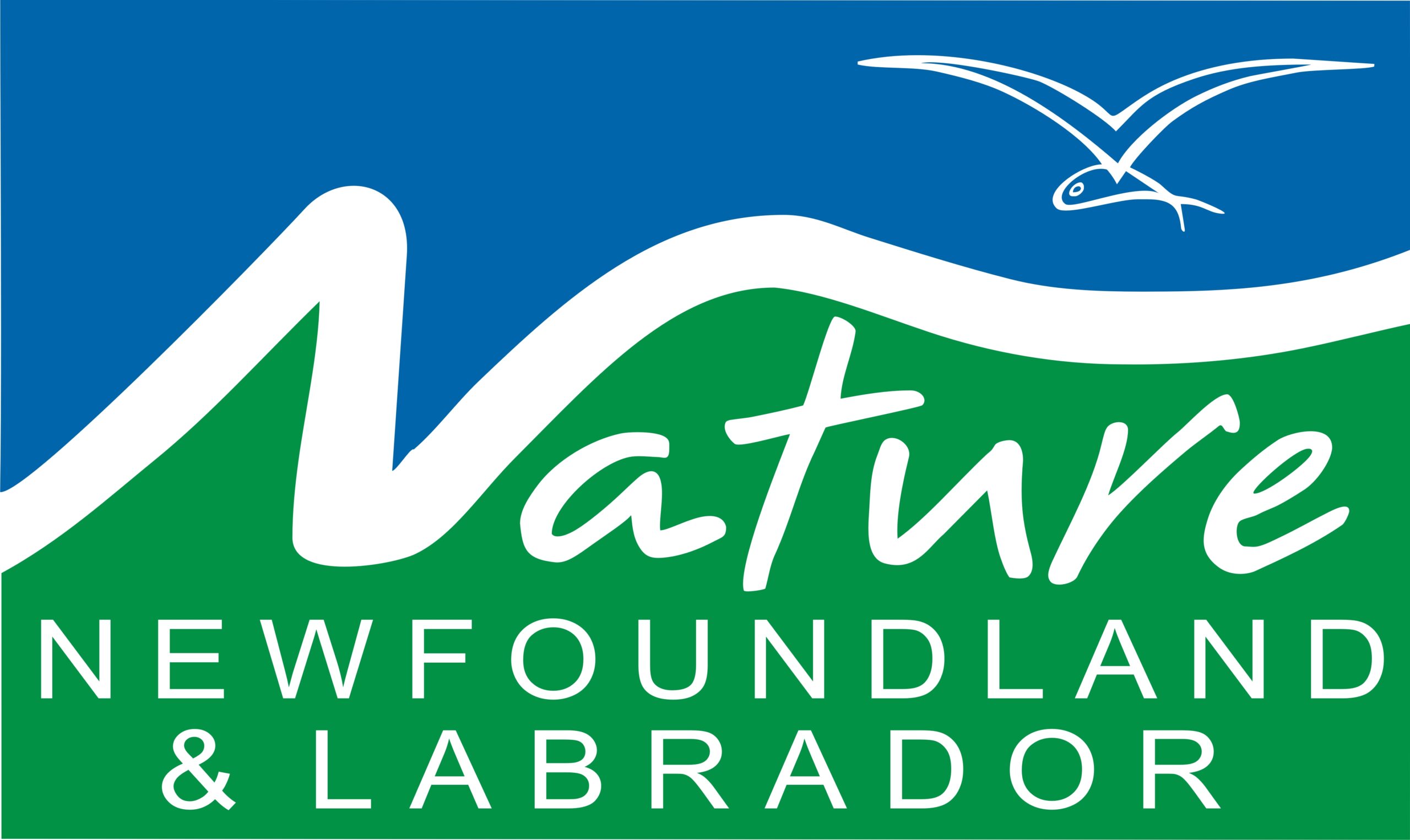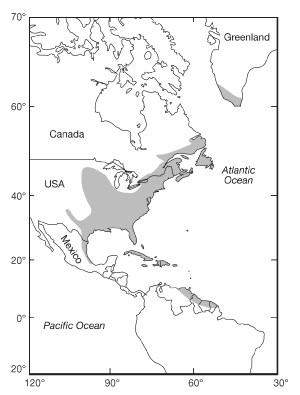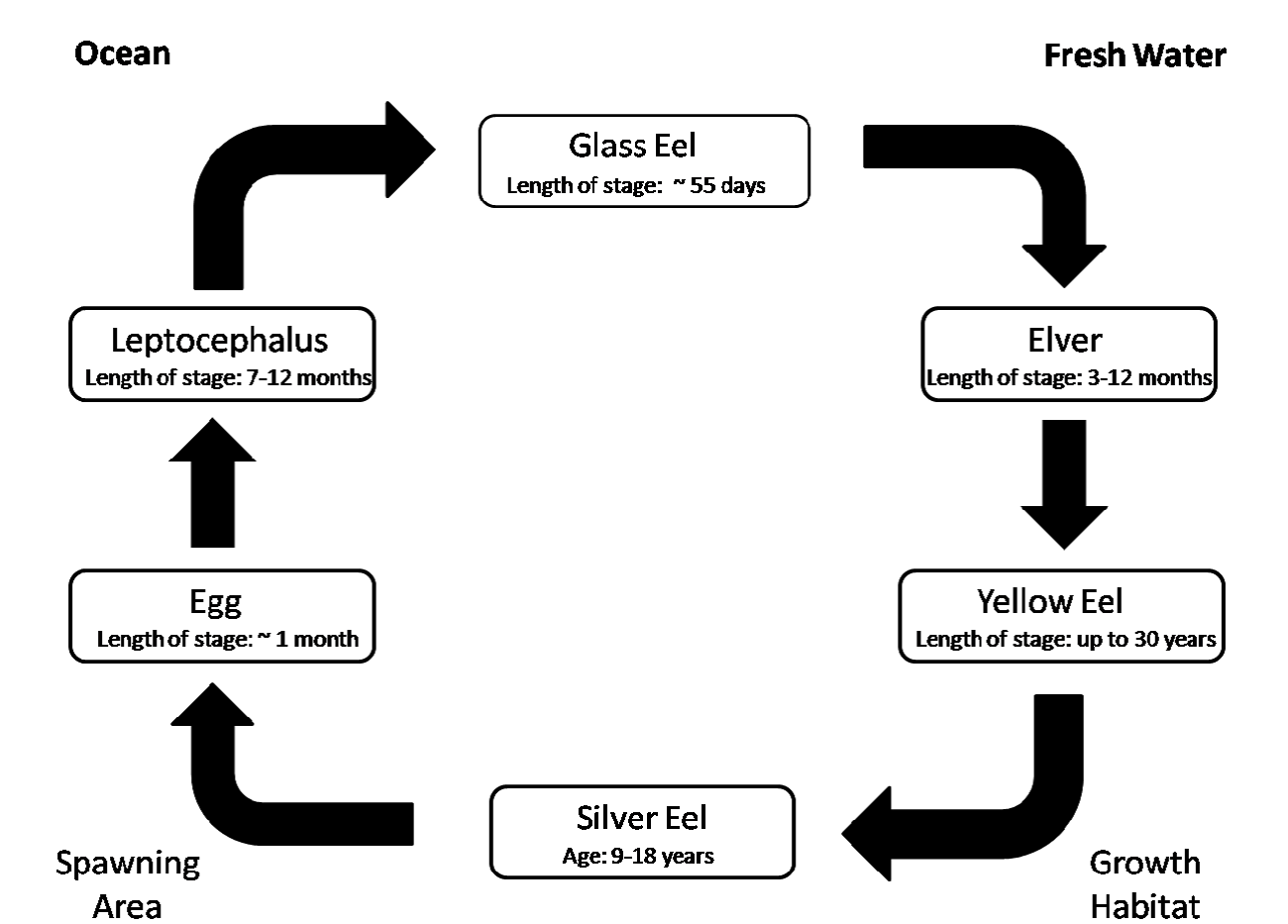by J. D. Jacobs and R. J. Gibson
The Government of Canada is conducting consultations on whether the American Eel (Anguilla rostrata) should be listed as “Threatened” under the federal Species at Risk Act. This SAR listing process for American Eel is a significant initiative in Canadian wildlife conservation that could lead to full federal legal protection of this species. It follows from its designation in 2012 as “Threatened” by the Committee on the Status of Endangered Wildlife in Canada (COSEWIC, 2012) and by species at risk listings by several provinces, including Newfoundland and Labrador (Wildlife Division, 2010).
The American Eel is a fascinating species. It occurs in most freshwaters connected to the western Atlantic Ocean, from northern South America to southwest Greenland, and including the Canadian Atlantic provinces and inland waters of the Great Lakes – St. Lawrence system. It is found widely in the freshwaters and estuaries of Newfoundland and its range extends to southwest Labrador (Fig. 2)
The eels all begin life in the Sargasso Sea, drift in larval form to coastal estuaries, and go through several life stages as they enter brackish estuaries and freshwater streams and lakes (Fig. 3). They grow to adulthood in freshwater, reaching lengths of over 0.4 m for males and to over 1 metre for females. The eels live up to 20-30 years in freshwater, then make their only migration back to the Sargasso Sea, where they reproduce and presumably die. American Eel biology, including life history, distribution and population status, is reviewed in COSEWIC (2012) and for Newfoundland and Labrador in Gibson (2007), Clarke et al. (2007), and Wildlife Division (2010).
The European Eel (Anguilla anguilla) is closely related to but genetically distinct from the American Eel and also spawns in the Sargasso Sea. Historically, it was an important part of the European fishery, but its numbers have greatly declined and it is now listed as “Critically Endangered” by the International Union for the Conservation of Nature (IUCN).
The American Eel fishery has long been of cultural and commercial importance over much of most of its range of distribution, having its roots in Aboriginal cultures and subsequently with European settlers in those regions.
American Eel is considered to be declining in many locations, particularly in the upper Great Lakes, while numbers appear to be more stable elsewhere (DFO, 2015). According to COSEWIC (2012), in recent decades the percentage of mature individuals has declined by more than 70% in some areas, although the overall rate of decline is unknown.
Likely reasons given for the species decline include: barriers in freshwater preventing upstream migration, mortality in hydroelectric turbines, fisheries, contaminants, disease (specifically, swim bladder parasite), climate change and shifting oceanic conditions, with the significance of threats varying within the different areas of its distribution (COSEWIC, 2012). Constraints on its recovery include continuing habitat degradation, especially owing to dams and pollution, and existing fisheries in Canada and elsewhere. Protection of aquatic habitat in less impacted areas would be essential to any recovery. For example, Newfoundland waters have been assessed as providing a significant amount of available habitat for American Eel (Clarke et al. 2007).
Protection has begun with the provinces. American Eel in Ontario was listed in 2007 as “Endangered” under the Ontario Endangered Species Act. In Quebec the species is being considered for listing under that province’s Act Respecting Threatened or Vulnerable Species (Govt. of Canada, 2015). In Newfoundland and Labrador, American Eel has been listed since 2007 as “Vulnerable” under the provincial Endangered Species Act (Wildlife Division, 2010).
Listing the species federally as “Threatened” will mean that “… it will be illegal to kill, harm, harass, capture, take, possess, collect, buy, sell or trade American Eel unless authorized by a SARA permit or exempted under a recovery strategy”. Such exemptions will allow for “licensed communal fisheries for food, social and ceremonial purposes” (Govt. of Canada, 2015). As part of an obligatory recovery strategy, critical habitat for the species will need to be identified and protected.
Readers are urged to participate in the consultation process and assist in determining the future of this species in Canada. Comments are due by March 18, 2016, through the SARA website. A survey has also been provided to give input to the process, but this appears to be primarily an economic “cost vs. benefit” approach.
References
Clarke, K.D., R.J. Gibson and D.A. Scruton. 2007. A review of the habitat associations and distribution of the American Eel within Newfoundland and Labrador. Presentation at the Canadian Conference for Fisheries Research, January 2007.
DFO (Fisheries and Oceans Canada) 2006. UnderwaterWorld – American Eel.
DFO (Fisheries and Oceans Canada) 2015. Aquatic Species at Risk – American Eel.
Gibson, R. John 2007. From Tow to Eel, The Osprey 38(2): 43-45.
Government of Canada, 2015. Species at Risk Public Registry, Public Consultations. Survey here



